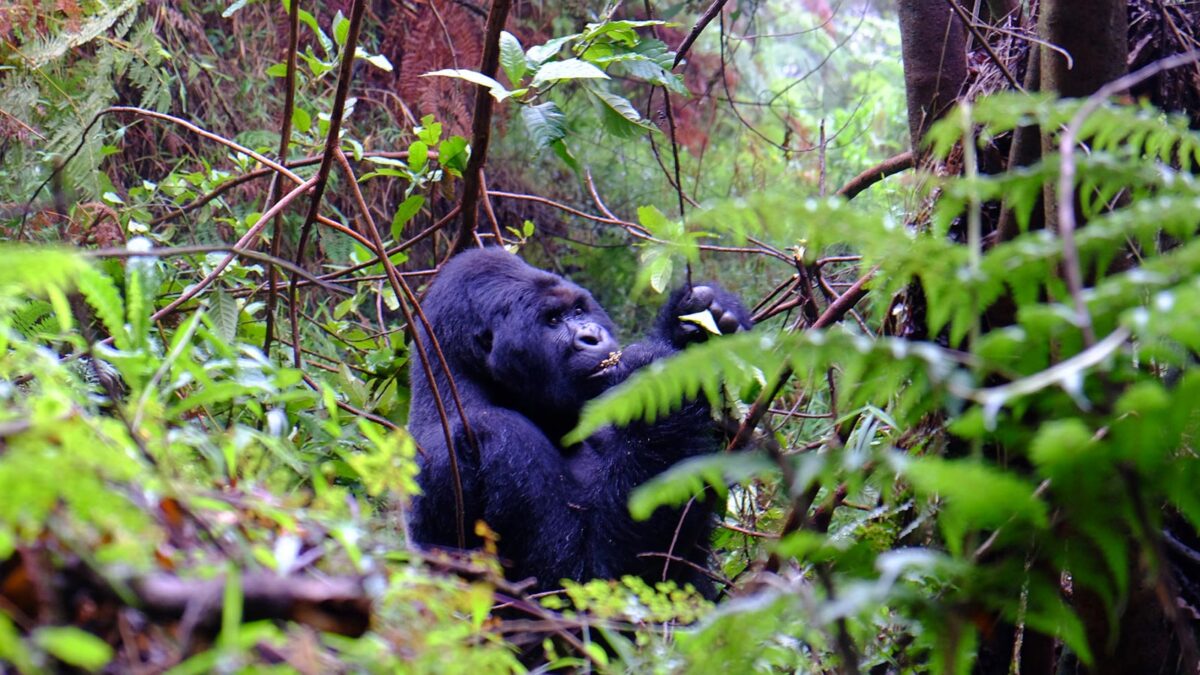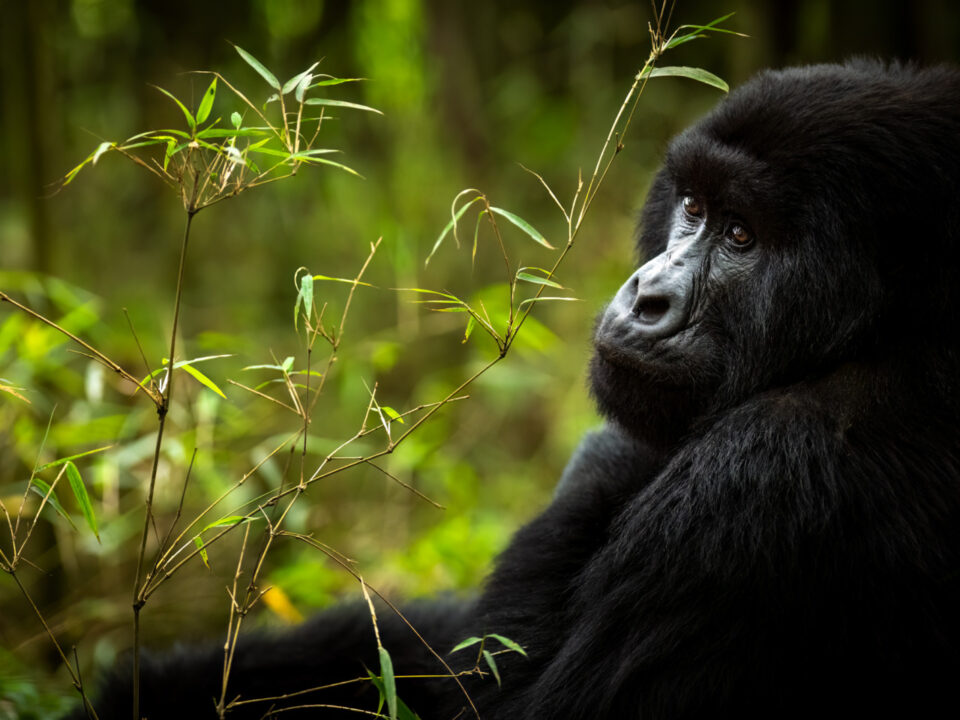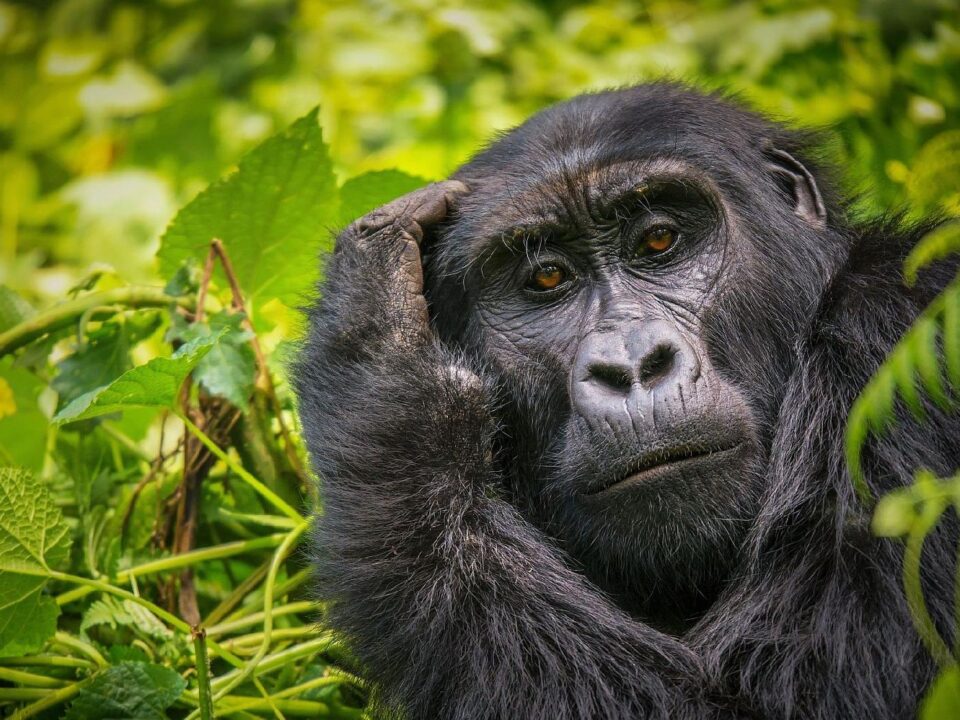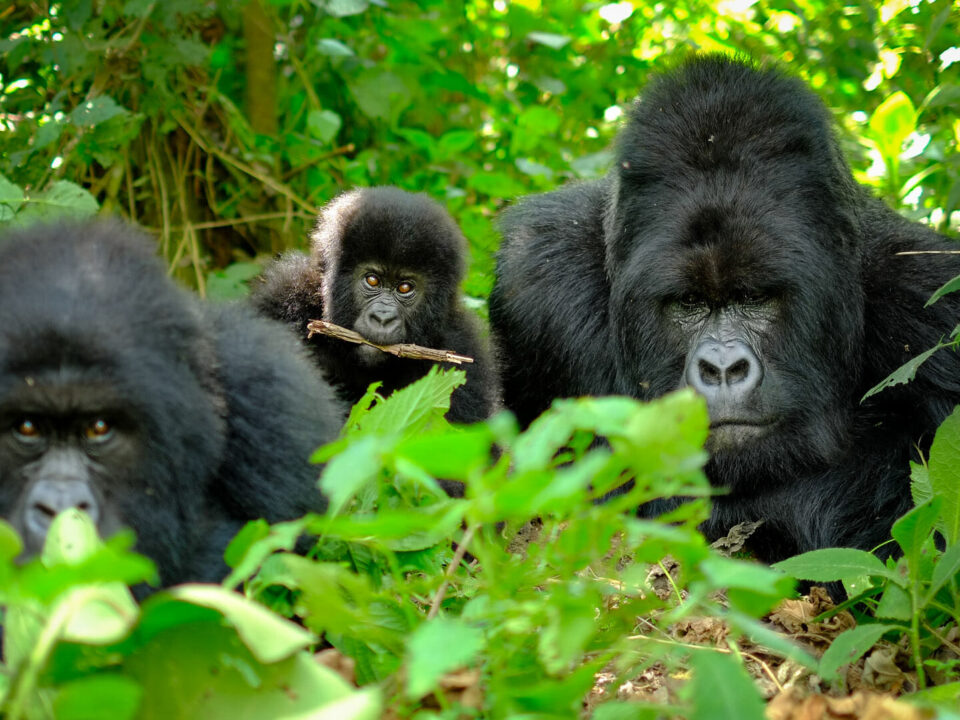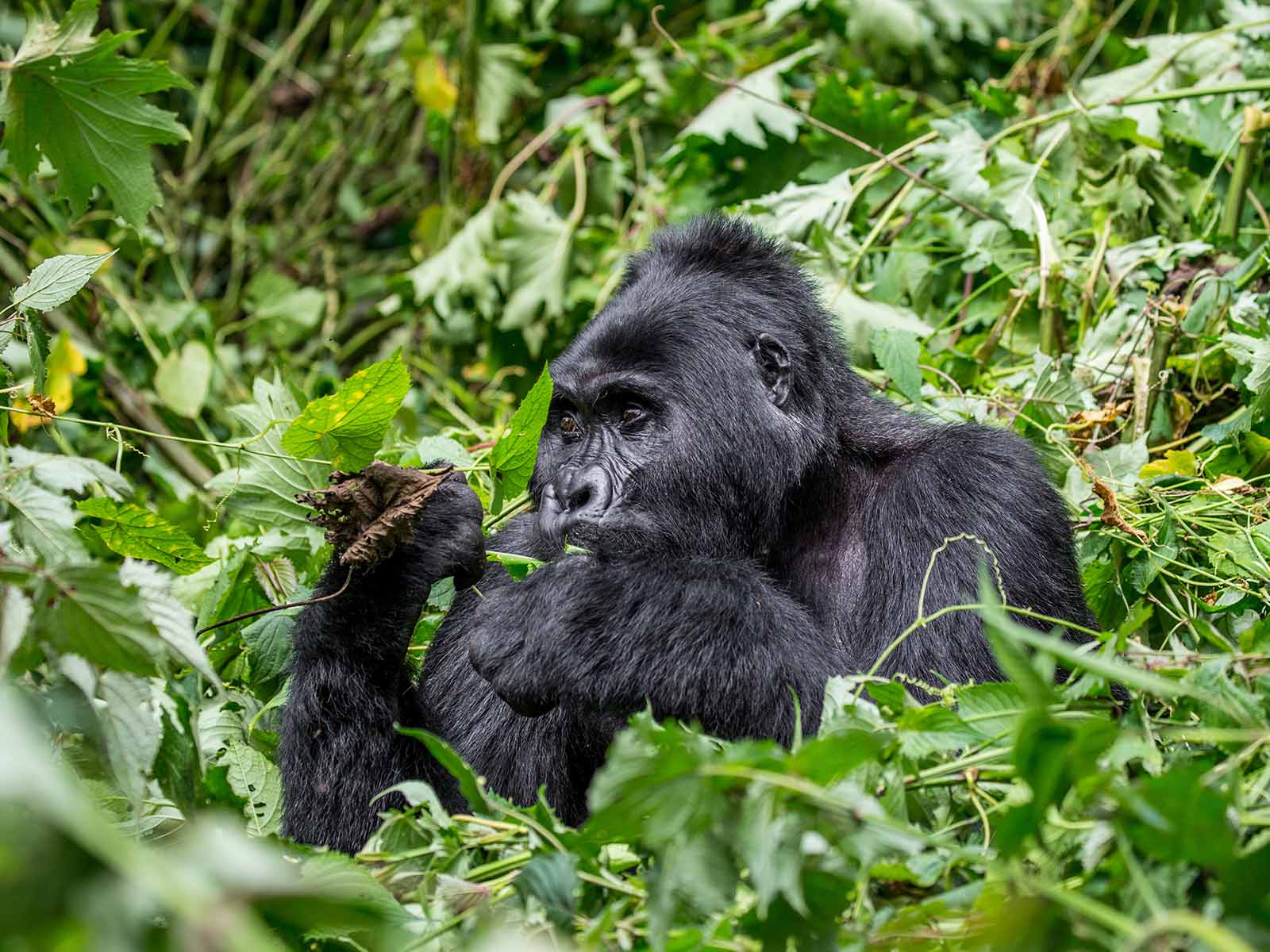
A Guide To Gorilla Trekking in Mgahinga Gorilla National Park, Uganda
July 19, 2023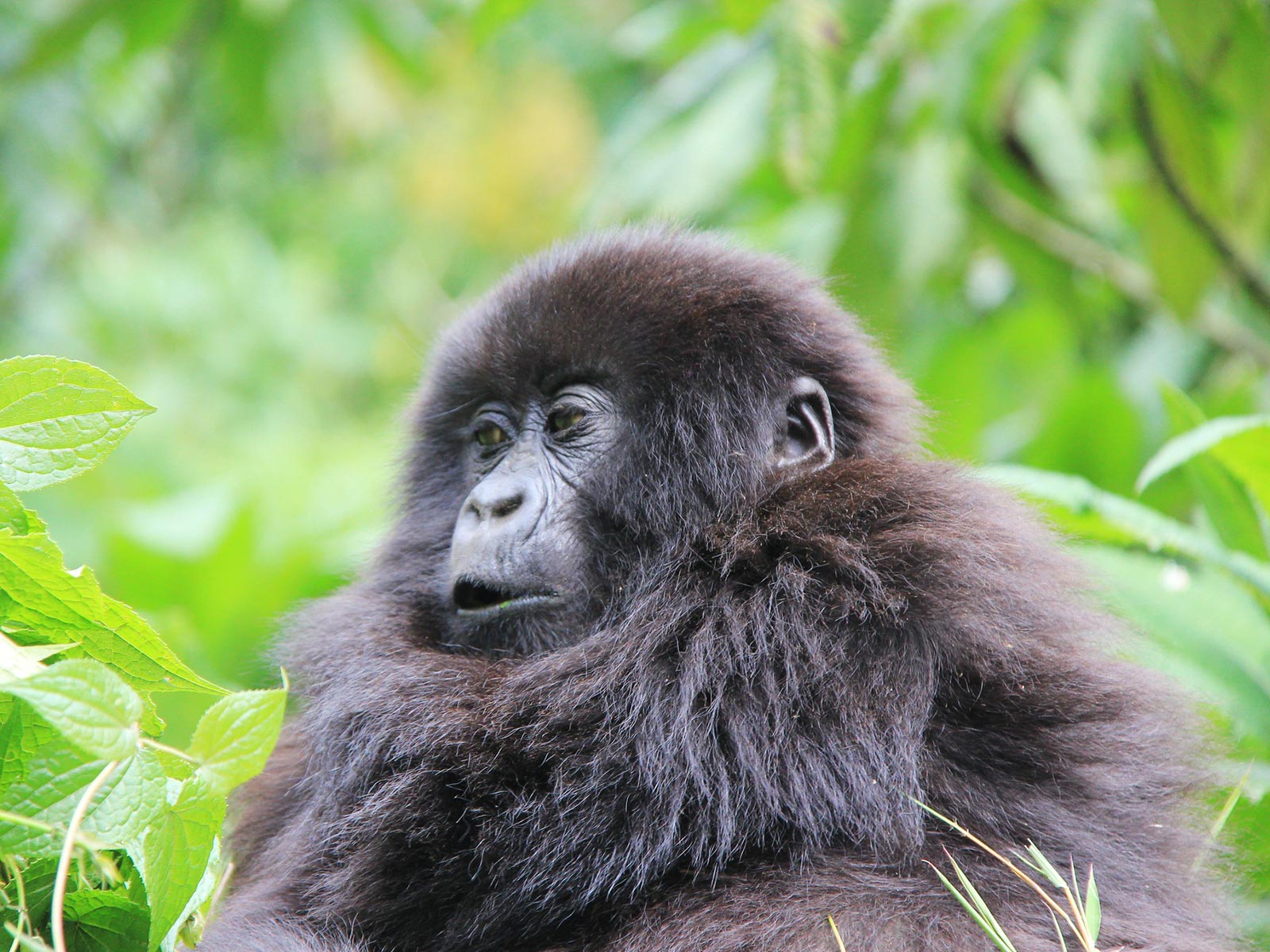
Rwanda Gorilla Trekking and Safari Holidays from the United Kingdom
July 19, 2023Rwanda vs. Uganda: Comparing Gorilla Trekking Experiences
When it comes to gorilla trekking, both Rwanda and Uganda are renowned for offering exceptional experiences. The debate between the two destinations, often referred to as “Rwanda vs. Uganda,” revolves around which country provides the best gorilla trekking adventure. To help you make an informed decision, let’s delve into the details of each destination.
Gorilla trekking in Rwanda and Uganda involves hiking through dense vegetation, steep terrain, and unmarked trails. While it can be physically demanding, almost everyone who embarks on this quest successfully reaches the gorillas. Whether you choose Rwanda or Uganda, the awe-inspiring experience of hiking the mountain slopes to encounter a mountain gorilla family and spending a precious hour with them will leave you breathless.
Several factors can influence your decision between Rwanda and Uganda, including gorilla permit availability, cost, accommodation options, access to the gorillas, and additional activities you can incorporate into your journey. Consulting with a local tour operator, such as Trek Africa Expeditions, is highly recommended. They can provide valuable guidance and assistance in securing permits and making informed choices based on your preferences and budget.
Gorilla Permit Availability
In terms of gorilla permit availability, Uganda has an advantage. With more than half of the total gorilla population and double the number of habituated gorilla groups compared to Rwanda, Uganda offers over 160 gorilla permits per day. The country boasts 20 habituated gorilla groups across two national parks: Mgahinga gorilla National Park and Bwindi Impenetrable National Park.
In contrast, Rwanda has 12 habituated gorilla groups, with fewer than 80 permits available per day. Gorilla trekking in Rwanda primarily takes place in Volcanoes National Park, starting from a single point in Kiningi. All accommodations are concentrated in the Kiningi area.
The Cost of Gorilla Trekking
The cost of gorilla trekking is influenced by the price of gorilla permits and accommodation. Rwanda has higher permit fees, with each permit priced at $1500 per person per trek since 2017. Uganda, on the other hand, offers permits at USD800 per person per trek since 2019. Additionally, Uganda provides a unique option called the gorilla habituation permit, priced at $1500 per person. This permit allows for spending over four hours with a semi-habituated gorilla family, offering a more immersive experience not available in Rwanda.
Booking permits during peak seasons (July to September and December to March) can be more challenging in both countries. It is advisable to secure your permits at least six months in advance if you plan to visit during these popular periods.
Access to Gorillas
Rwanda offers the easiest access to gorillas, with a convenient two-hour drive from the international airport to Volcanoes National Park on well-surfaced roads. Upon arrival in Kigali, you can transfer directly to your chosen lodge near the gorillas on the same day.
In contrast, accessing Uganda’s gorilla parks requires a longer journey. The national parks are approximately 500 km from Entebbe International Airport. After landing in Entebbe, it is recommended to spend a night before embarking on a 10-hour drive across the country to Bwindi or Mgahinga National Parks. Alternatively, there are smaller airports located a two-hour drive from Bwindi and Mgahinga for those who prefer to avoid the long drive.
Both countries require trekking on foot to reach the mountain gorillas. There are no roads within the parks, and trekkers may need to travel up to 45 minutes on unpaved dirt roads from the briefing point to the trekking starting point. Whichever country you choose, be prepared for an immersive and sometimes rugged trekking experience.
Difficulty of Gorilla Trekking
Rwanda’s Volcanoes National Park is situated at the base of five dormant volcanoes, with trailheads located at the bottom. Trekking in Rwanda often involves ascending the mountain slopes to find the gorillas. The terrain can be steep and uneven, requiring moderate physical fitness.
Mgahinga Gorilla National Park in Uganda offers a trekking experience similar to that of Volcanoes National Park. Bwindi Impenetrable National Park, on the other hand, presents a more unpredictable terrain. Some days, trekkers may hike up the slopes, while on other days, they may descend into the valleys. The exact trail can vary depending on the gorillas location within the park. Although Bwindi’s forest is denser and darker than Volcanoes, the trekking experience can be equally challenging in both destinations.
The duration of the trek can range from 30 minutes to 4 hours in either country. The movements of the gorillas within their protected zones dictate the length of the trek, and trackers must follow their lead.
Accommodation Options
Both Rwanda and Uganda offer a range of accommodation options, although Rwanda’s choices tend to lean toward the luxury market. In Rwanda, gorilla trekking accommodations are concentrated in Kiningi, with upscale lodges overshadowing budget options. Staying in a luxury lodge with excellent amenities enhances the overall gorilla trekking experience in Rwanda, despite the higher permit fees.
Uganda provides a wider array of gorilla trekking accommodation options. From budget hostels to comfortable lodges and unique forest retreats, there is something to suit every traveler’s preferences. Some lodges in Uganda even have unexpected gorilla visits, allowing guests to witness gorilla activity right above the park canopy. Many lodges are conveniently located within a five-minute walk from the trekking starting point, adding an adventurous element to the overall experience.
Other Activities
Both Rwanda and Uganda offer additional activities to complement your gorilla trekking experience. Rwanda’s Akagera National Park is an excellent option for a laid-back safari adventure featuring the Big Five. Nyungwe National Park, known for its rugged terrain, offers exceptional primate encounters, including chimpanzee trekking. Rwanda also boasts outstanding conservation and cultural tourism programs, allowing travelers to explore beyond the gorilla experience. For those interested in the country’s history, visiting the memorial museums in Kigali provides insights into the 1990s genocide.
Uganda offers a more diverse safari experience. Murchison Falls National Park offers opportunities to spot elephants and enjoy boat cruises along the Nile, while Queen Elizabeth National Park is renowned for its Kazinga Channel, where hippos, buffalo herds, and antelope can be observed along the shoreline. Kibale Forest, known as the best primate experience worldwide, offers the chance to walk with chimpanzees. Both Rwanda and Uganda can be combined with neighboring destinations such as Masai Mara National Reserve in Kenya or Serengeti National Park in Tanzania, allowing for an extended and exhilarating safari experience.
Gorilla Trekking in Rwanda or Uganda Safaris
If you’re interested in tracking gorillas in either Rwanda or Uganda, Trek Africa Expeditions has a dedicated team of local consultants ready to assist you. They can help you find the best destination based on your budget, preferred travel dates, and other requirements. Trek Africa Expeditions can handle permit bookings, accommodation arrangements, transfers, and overall trip management. Simply send an email to info@trekafricatours.com to connect with a consultant who will provide personalized recommendations and assistance.

